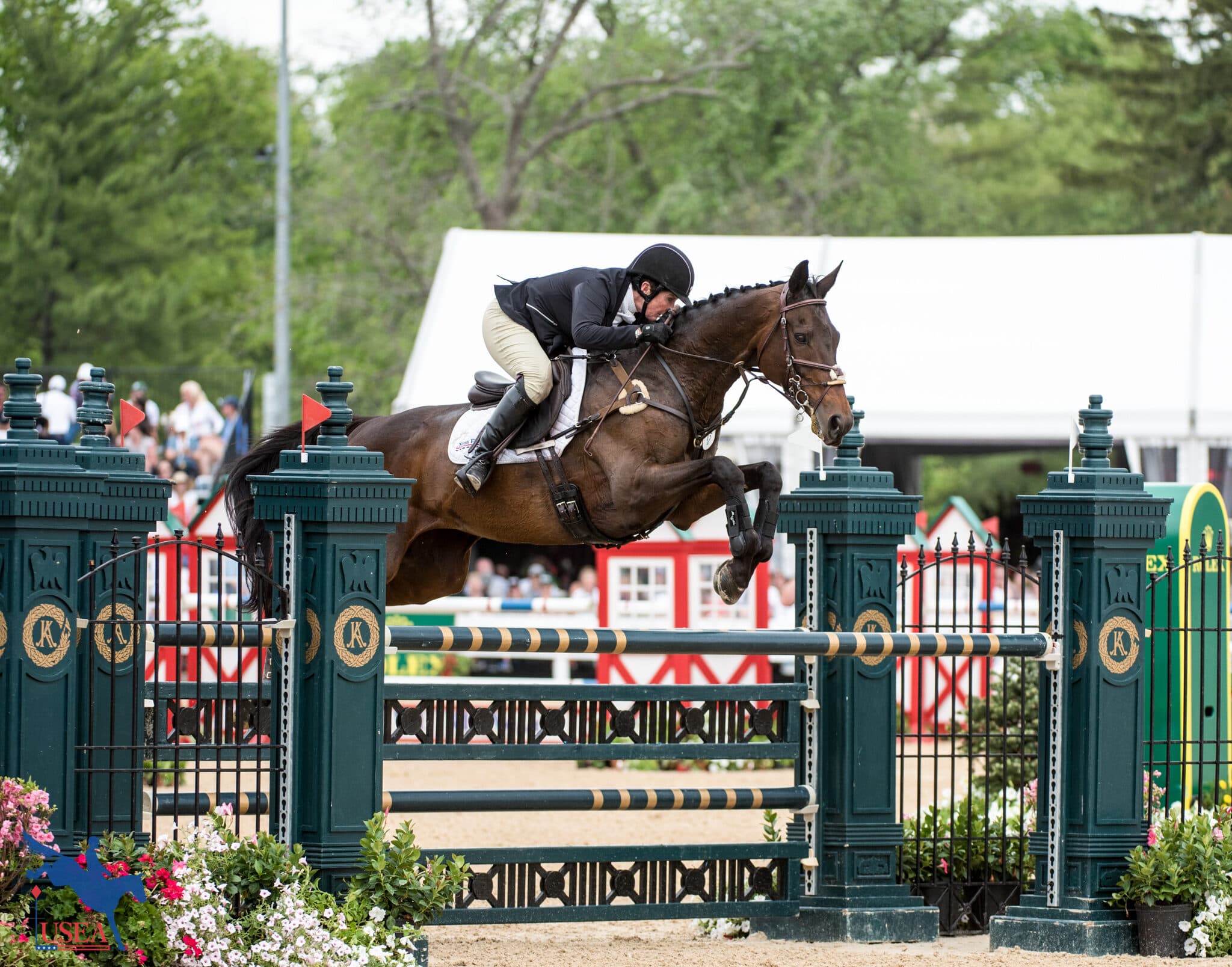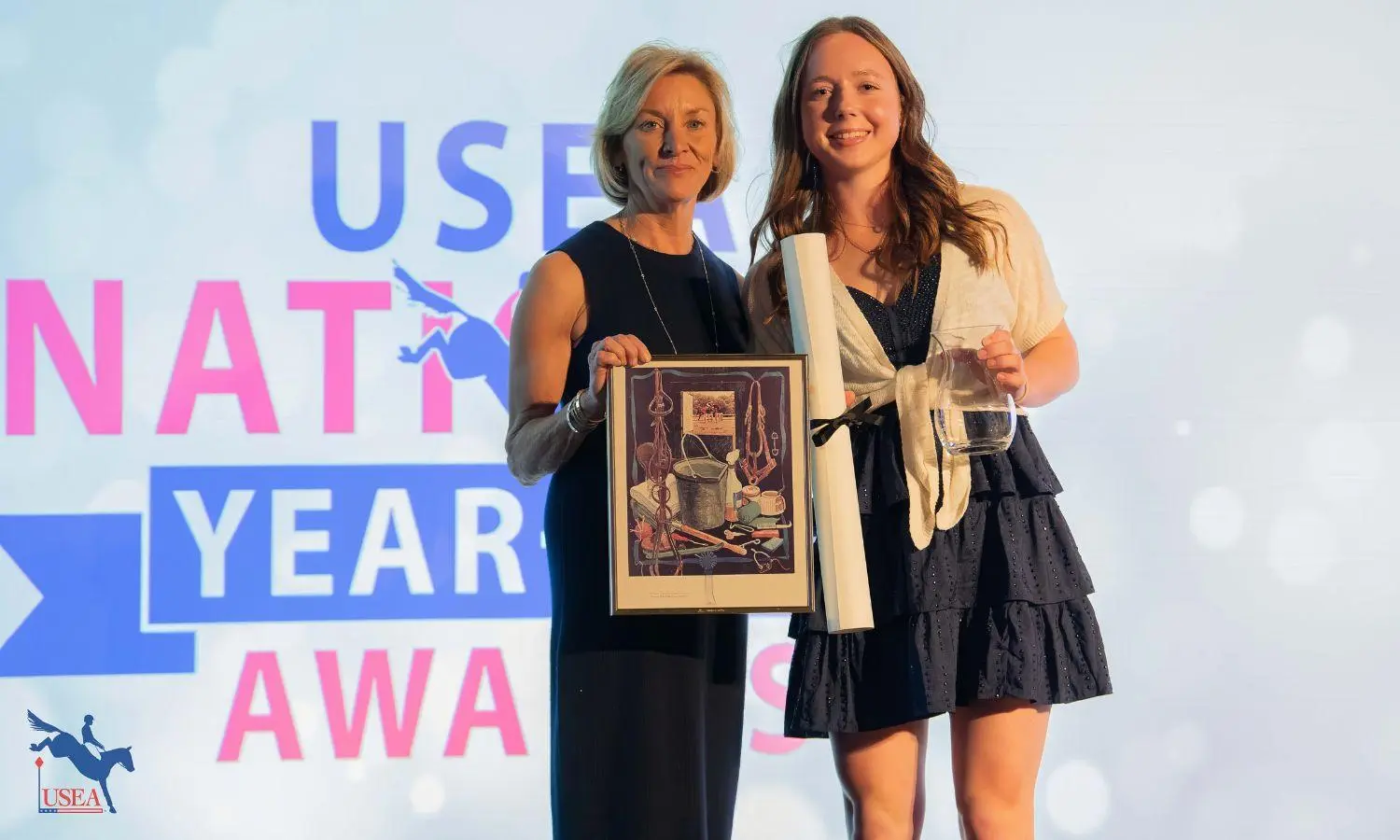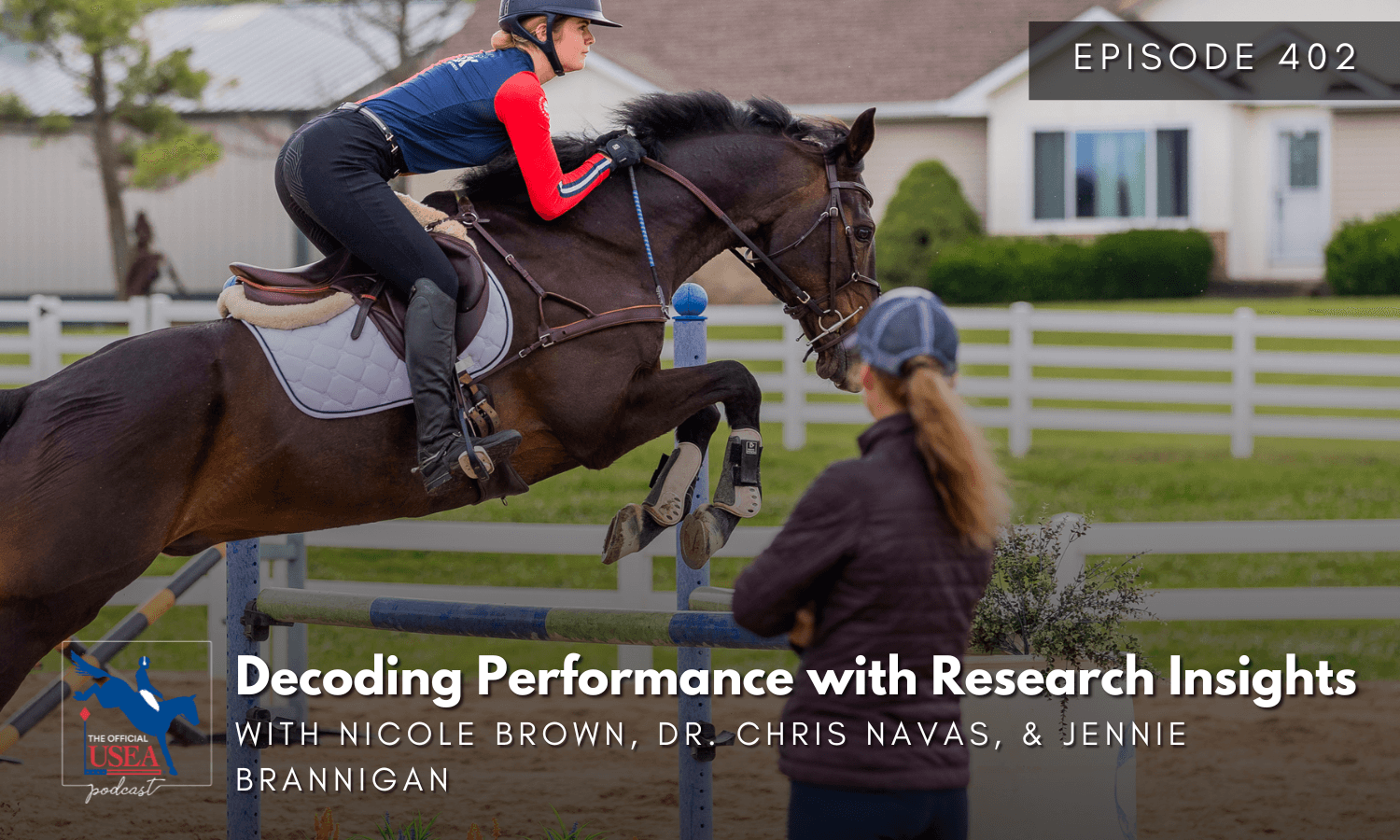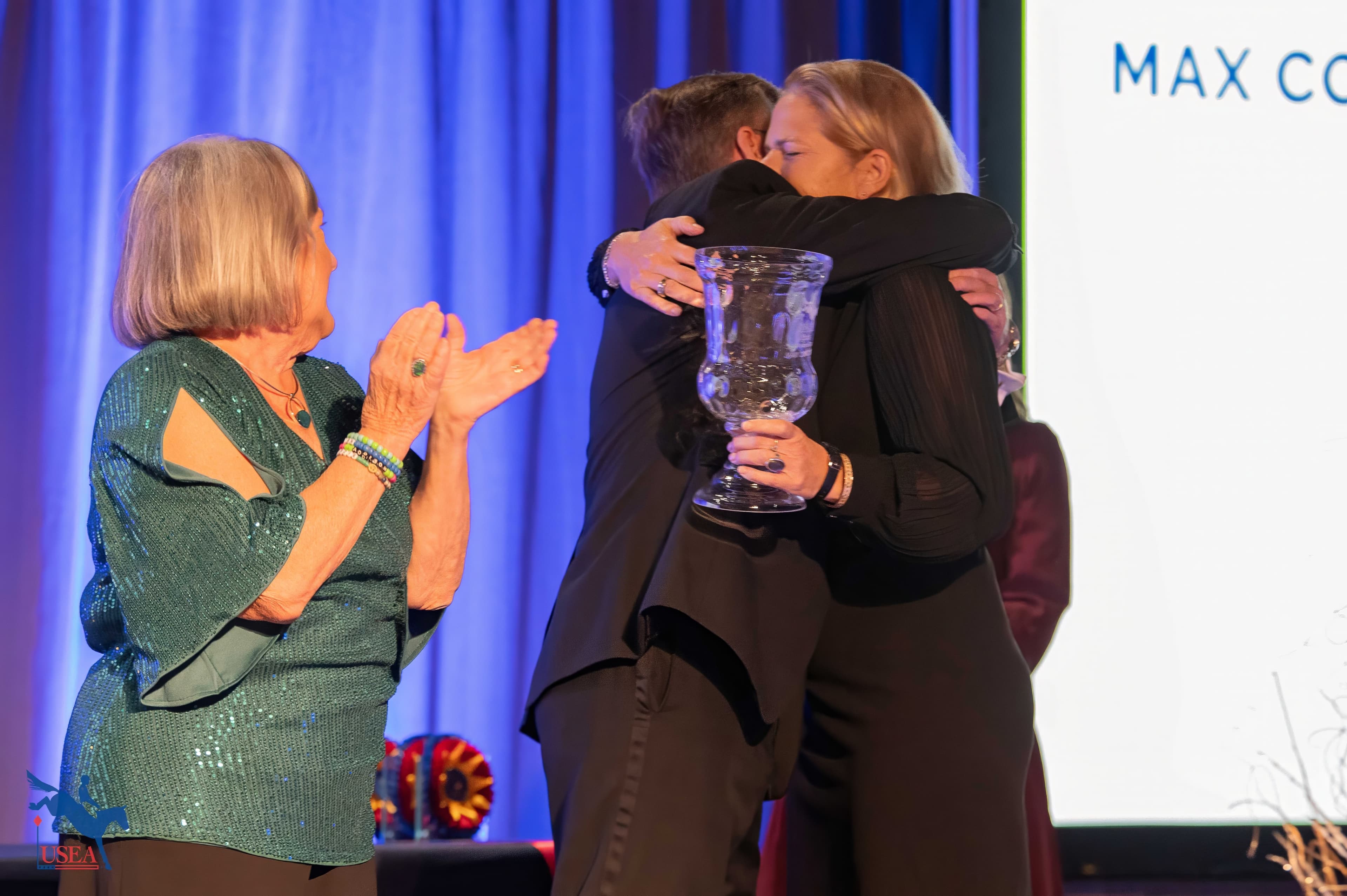Grid Pro Quo with Sally Cousins

Don't let the winter weather get you down when you can use being stuck in the arena as an opportunity to fine tune your riding! In this series, we are reviving past Grid Pro Quo articles from Eventing USA to help you use the off-season to your advantage and keep you and your horse in tip-top shape for when it's time to get back out there. Click here to check out other past Grid Pro Quo exercises to spice up your arena this winter!
Why:
As eventers we live for the thrill of cross-country, and the same is true for most of our horses, but the gallop or canter (depending on the level) needed for cross-country is quite different than the canter needed in show jumping. When traveling at speed on cross-country, your horse may get a little long and flat, and I find that after an event or a cross-country school, my horses are a bit more keen and eager than what is needed in the show jumping arena.
This is my favorite jumping exercise for putting the technique back in a horse after a cross-country round. The tight 19.5-foot distance between the two verticals is a great exercise to put the sharpness, carefulness, and roundness back into your horse’s jump. If at all possible, I prefer to use planks instead of traditional rails for this exercise, as they are heavier and tend to make the horses a little more careful.
The placement poles are great for teaching horses to adjust themselves and keep their balance with little involvement from the rider. Just like most gymnastic exercises, the job of the rider is to do as little as possible and to simply stay balanced over the horse. With that said, once a horse has passed a certain level, I typically stop trotting grids and instead concentrate on canter exercises. I think it is important that the rider and horse are able to create the roundness on their own. In this case, the roundness I am referring to is the horse’s trajectory over the jump. My goal for my horses as I move them up the levels is to shorten and heighten the trajectory.
While this is a hard exercise, it is appropriate for Novice level pairs. The placing poles are perfect for teaching a horse and rider how to see a distance. In a clinic with Hans Günter Winkler about 20 years ago, I learned that using placing poles is one of the best things that you can do for your horse, and I have integrated them into my jumping exercises ever since. This particular exercise has evolved over time and is now set up in my ring almost always.
How:

One of the big things I try to do while warming up for a jump school is to practice creating and keeping the canters that I am going to need over fences. Depending on the horse’s age, fitness, and competition level, the canter is going to be different; the canter that my green Novice horse needs is quite different than the canter that my experienced Advanced horses need.
Do a lot of transitions, both from gait to gait (trot to canter, canter to trot, walk to canter) and within the gait (lengthening and shortening) during the warm-up. Not only does this help with your horse’s adjustability, it also helps to keep your horse sharp off your leg.
When teaching, I always tell my students not to bring the problems from their dressage work to the jumping ring. If I have a horse that has trouble doing a rein back or staying connected through a right lead canter depart, I might just let that go for the day. I do not want to start my jump school with a negative attitude, so I instead concentrate on the flatwork exercises that my horse does really well and build from there.
For the more Novice level horses, I start by having the pair jump the first vertical with placing poles set eight to nine feet out on both sides. In addition to the placing poles, I use ground poles on both sides of the vertical, typically rolled out to the edge of the standards. All this does is spell out to the horse where his feet need to be on approach and take off.
As part of the warm-up, raise the vertical two holes at a time until it is at the rider’s competition level. While warming up over this vertical, be very strict about straightness. Aim for the middle of the fence and focus on your body position. One good exercise to test your straightness is to halt a few strides after the fence and then look back. Oftentimes, you will be surprised at how much you have allowed yourself to drift. If this is the case, it is no big deal, just practice some more.
If it is the horse that has a hard drift, there are a few things that you can do to help resolve the problem: put more poles on the ground before and after the fences to create a chute and help keep the horse straight between the fences; or put a guide pole up on the top plank to help keep the horse straight over the fence. A horse that is drifting is usually looking to make more room for himself so he does not have to use himself. This usually tells me that there is a strength problem, so I will keep the fences low in the jump school and then address the strength issue outside of the jumping arena.
After you are comfortably and confidently jumping the warm-up vertical in a straight line, lower it back down to a few holes below your competition height. Then add in the second vertical to complete the one-stride combination. Again, the placing poles (before, between, and after the fences) and rolled-out ground rails will help dictate to your horse where he needs to be in terms of stride length and balance. As noted before, this 19.5-foot distance is a bit tight, so you will probably need to repeat it a few times before your horse clues in to the distance. As the rider, your job is to sit up tall with your weight evenly distributed on both sides.
For more advanced horses, I start their jump school with the two verticals in place at a low height. To add a little bit of difficulty to the exercise, I like to raise the placing poles around six inches off the ground using cavalletti or blocks of wood or plastic. The raised poles, in effect, add height to the fence, so the verticals will never get much bigger than your competition height at most.
Finally, add the hogsback to the exercise once you are jumping the one-stride combination neatly and cleanly. While it would be great to set the hogsback up on a related distance to the planks, if your ring is not big enough, you can put your hogsback most anywhere. The hogsback gets the horses to jump big and round, just like they would over a cross-country rolltop or table. So by jumping the hogsback directly to the planks, you are practicing what you have to do in competition, whether you are coming off a long, open gallop to a small jump on a Novice course, or jumping a maxed out table to a combination at the upper levels. The toughness of this exercise comes from the rider having to change the canter from the open canter needed for the hogsback to the compressed canter needed for the combination.
As you can probably guess, this is a great exercise for horses that tend to rush. Typically after a few hard rubs on the planks, the horse will slow down and pay attention, but if the horse is intent on rushing, lower the planks a few holes so that they don’t make a huge mess of it and scare themselves. Once horses get used to the exercise they learn to adjust themselves. I believe in this exercise and will do it almost weekly with my horses, and I tend to work it into most of my jump schools.
About Sally Cousins
Based in Oxford, Pennsylvania, Sally Cousins has been a staple on the eventing circuit for more than 20 years. She was the USEA Leading Lady Rider of the Year for six consecutive years from 2008 to 2013 and has competed at the world’s premiere events, including Badminton, Burghley, and Rolex Kentucky. While Sally stays extremely busy competing, when she is not riding she can be found teaching both at her farm and neighboring facilities. Learn more on her website.
This Grid Pro Quo first appeared in Volume 44, Issue 4 of Eventing USA.














